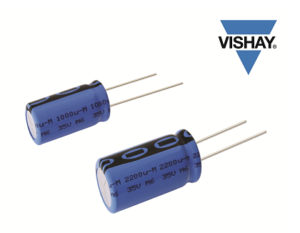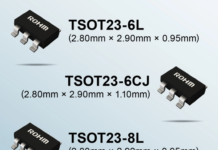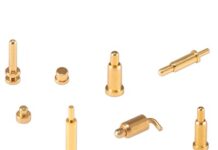
Miniature Aluminum Capacitors provide increased Design Flexibility & save Board Space
Automotive Grade devices offer high ripple currents up to 3.8 A, operating temperatures to +105 °C, & useful life of 10,000 hours at +105 °C
Vishay Intertechnology introduced a new series of low impedance, Automotive Grade miniature aluminum electrolytic capacitors that provide increased design flexibility & save board space. The capacitors combine high ripple currents up to 3.8 A with high temperature operation to +105 °C and very long useful life up to 10,000 h at +105 °C.
Compared to previous-generation solutions, Vishay BCcomponents 170 RVZ series capacitors offer lower impedance and 10 % to 15 % higher ripple current. This allows designers to utilize fewer components, increasing design flexibility and saving board space. In addition, the AEC-Q200 qualified devices are available in smaller case sizes, ranging from 10 mm by 12 mm up to 18 mm to 40 mm.
Featuring radial leads and a cylindrical aluminum case, insulated with a blue sleeve, the 170 RVZ series offers rated voltages up to 63 V, capacitance from 100 µF to 6800 µF, and low impedance. The capacitors are charge- and discharge-proof.
As polarized aluminum electrolytic capacitors with a non-solid electrolyte, the RoHS-compliant devices are ideally suited for smoothing, filtering, and buffering in switch mode power supplies and DC/DC converters for industrial, automotive, telecommunications, medical, and consumer applications.
Device Specification Table:
| Series | 170 RVZ |
| Case size (D x L in mm) | 10 x 12 to 18 x 40 |
| Capacitance range | 100 µF to 6800 µF |
| Tolerance | ± 20 % |
| Rated voltage | 10 V to 63 V |
| Category temperature range | -40 °C to +105 °C |
| Useful life @ +105 °C | 4000 h to 10,000 h |
| Ripple current | 445 mA to 3,800 mA |
| Max. impedance at 100 kHz | 0.017 Ω to 0.260 Ω (@ +20 °C); 0.120 Ω to 1.860 Ω (@ +40 °C) |
| Climatic category IEC 60068 | 55 / 105 / 56 |
Samples and production quantities of the 170 RVZ series are available now, with lead times of six weeks.



















